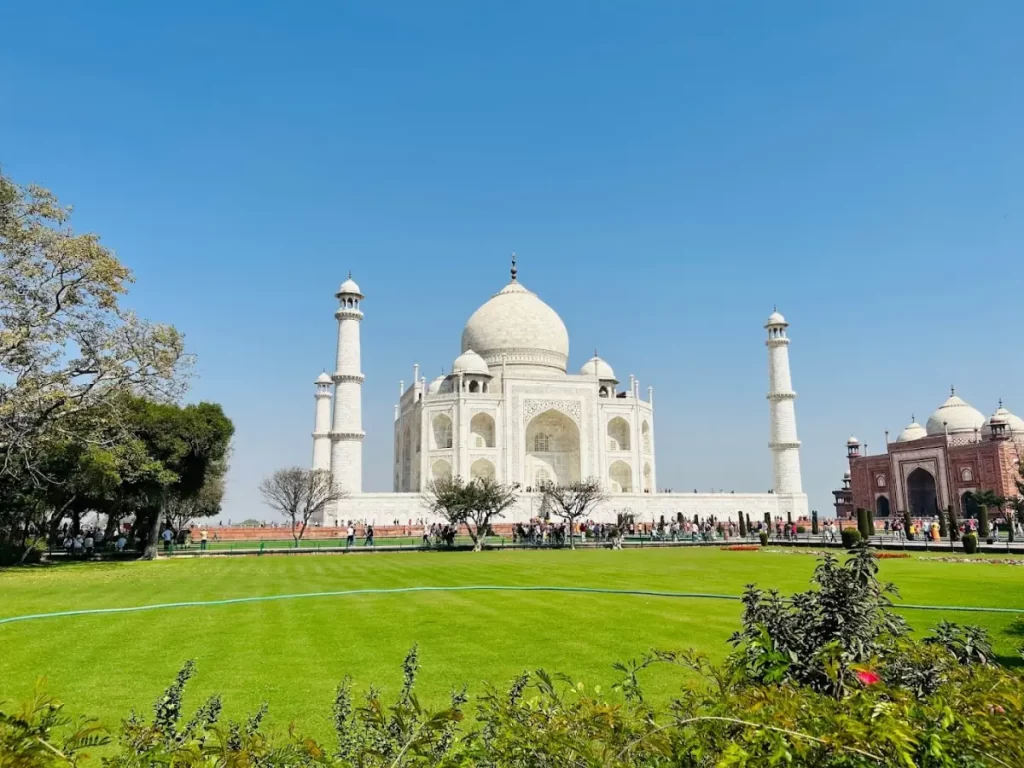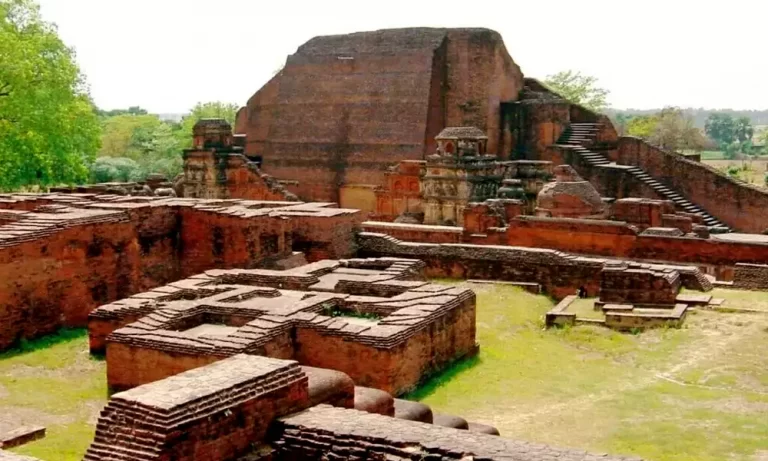The UNESCO World Heritage Convention, established in 1972, works to protect natural and cultural sites around the world. UNESCO says India has the sixth-highest number of heritage sites in the world. A new list says that 38 places in India are World Heritage Sites. Both Indian culture and nature are very rich in this country. The UNESCO group has listed 30 cultural sites, 7 natural sites and 1 mixed site in India as World Heritage Sites.
This list of UNESCO World Heritage Sites in India has by Japji Travel after much care and study. If you are from India or visiting there, these are the seven places you must visit.
List Of The 7 UNESCO World Heritage Sites In India
1. Taj Mahal, Uttar Pradesh

The Taj Mahal is all over the world as one of the seven wonders of the world. The Mughal king Shah Jahan built it in memory of how much he loved his wife Mumtaz. What was the Taj Mahal called earlier?
This beautiful building was built in 1653 for Rs 32 billion. Many believe that this is the most beautiful building ever built in the Mughal period. This beautiful building is near the Yamuna River and has a unique example of art made of white marble stones.
Our site asks you to come to this place to witness the beauty of art, practical uses of science, love gifts and all other things that will bring peace to your heart.
2. Ajanta Caves, Maharashtra

This was India’s first World Heritage Site, and it was the caves. The Archaeological Department says that it is possible that the caves were built between 650 BC and 2 AD. There are 31 Buddhist rock-cut caves, statues and paintings that make up this amazing work of art.
The Ajanta Caves were built twice. In its first form, it was built during the Satavahana era. It was built a second time during the Vakataka dynasty of Emperor Harisena.
Some say that the Ajanta Caves were the beginning of traditional Indian art in India. The sculptures and decorations contain stories about the life of the Buddha. Indian art and building styles changed a lot because of the Ajanta Caves.
3. Chola Temples, Tamil Nadu

This temple was built during the Chola Empire in Tamil Nadu. Gangaikondacholiswaram Temple, Brihadeeswarar Temple and Airavatesvara Temple are the three Chola temples on the list. The Brihadeeswarar Temple, which was built by Rajaraja I, shows how the Chola Empire was formed. Then, when Rajendra I was in charge, the temple of Lord Shiva in Gangaikonda Cholapuram was kept in good condition. Rajendra II built the Airavatesvara Temple to hide the buildings from the Chola Empire.
All these places are still done in the same way as people have been doing for thousands of years. The three temples show Tamil culture, traditions and parts of the past.
4. Sanchi Stupa, Madhya Pradesh

The semicircular brick structure of Sanchi Stupa looks like a stone shrine built over the remains of Buddha. This Buddhist temple is one of the oldest stone buildings in India and is seen as a symbol of the country’s history. During the rule of Emperor Ashoka in the 3rd century BC, this Sanchi Stupa was built. It is 46 km northeast of Bhopal.
Sanchi Stupa is not the only building here. There are also churches, monasteries, pillars and palaces. At one time Buddhists used to come here to pray at Sanchi Stupa.
5. Jantar Mantar, Rajasthan

The 19 astronomical instruments that make up Jantar Mantar were all made by people and used to make telescopes. The building also houses the world’s largest stone sundial. The tools at Jantar Mantar can be used to learn more about polar systems, coordinate systems, radius systems, and horizon-borne local networks.
In the 1800s, Rajput king Sawai Jai Singh built this astronomical telescope, which is still in great condition today. People in India were very interested in science, as evidenced by Jantar Mantar. These days, computers cannot make predictions like before.
6. Nalanda University, Bihar

Nalanda Mahavihara is the only university in the world that does not belong to any country. Since it was built in 427 AD, it is considered the Harvard of its time. At that time there were more than 10,000 students here, and teachers came from all over the world. The job of this university is to stop people from giving information.
People studying at this university did not have to pay any fees because the king took care of their needs. Some people say that Bakhtiar Khilji attacked this college and burnt the books in the library. After that these books kept burning for three months.
7. Manas Wildlife Sanctuary, Assam

Manas Wildlife Sanctuary is in the state of Assam, which is in the Northeast. Goddess Manasa gave this wildlife sanctuary this name because it is near the Manas River. Its surrounding areas have a lot of plants, lush green forests and a variety of animals that are no longer alive.
In this wildlife sanctuary, you can see local species like tiger, elephant and golden langur as well as extinct animals like pygmy hog, hispid hare and Assam roof turtle. Visit this wildlife sanctuary and see many animals that are no longer alive.







You must be logged in to post a comment.